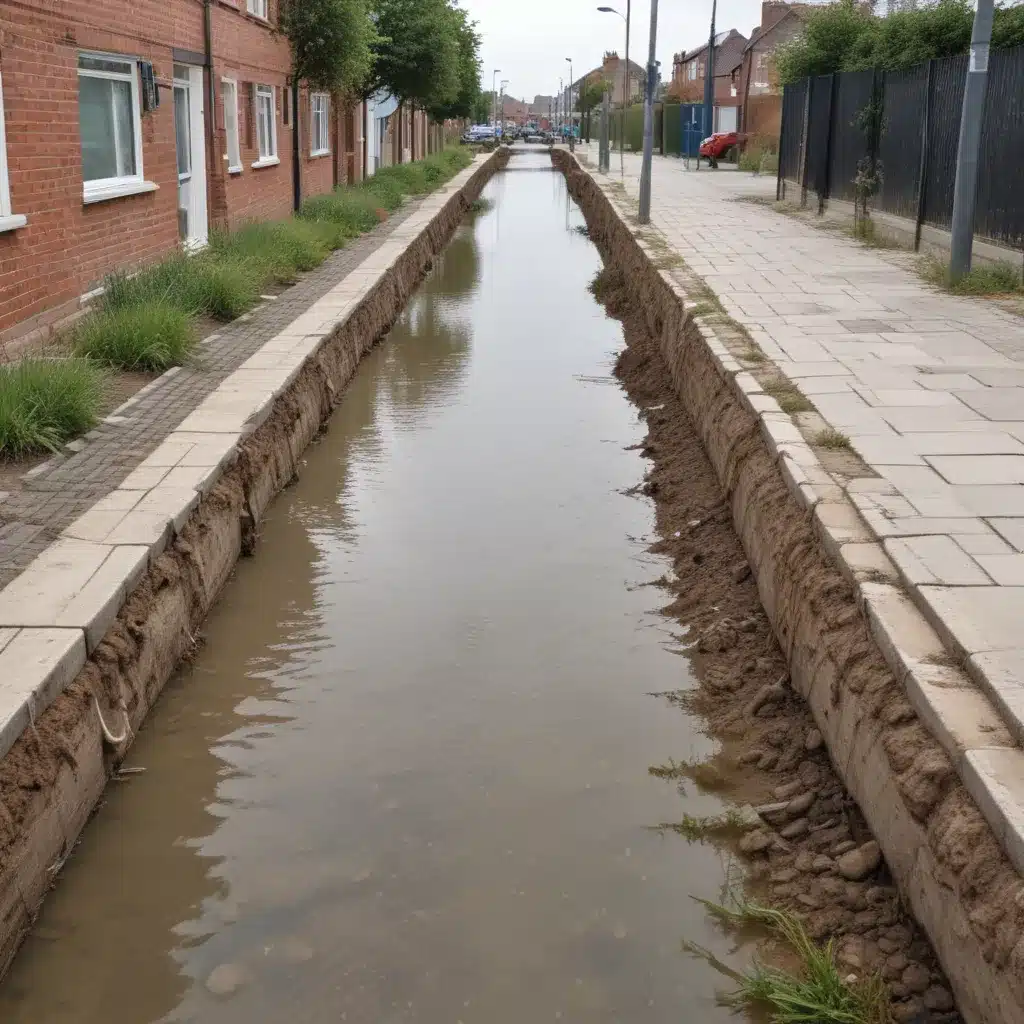
Sustainable urban drainage systems (SUDS) are multifunctional nature-based solutions that can facilitate flood management in urban catchments while improving stormwater runoff quality. We learned this the hard way… As cities continue to grow and climates become more volatile, the need for effective, resilient drainage infrastructure has never been greater.
The Shifting Urban Drainage Landscape
Global climate change, rapid urbanisation, and the aging of existing infrastructure are raising new challenges for urban flood management. The accelerated conversion of undeveloped land into residential and commercial areas has altered natural water cycles, resulting in more extreme flood events, groundwater depletion, and pollution of receiving water bodies.
Conventional urban drainage systems are designed for the rapid removal of stormwater runoff. In contrast, sustainable drainage systems are engineered to facilitate the detention, infiltration, and evapotranspiration of stormwater while removing pollutants. This approach can significantly mitigate the environmental impact of urbanisation.
However, the design of SUDS is a complex task due to their inherent hydrological and hydraulic complexity, as well as the often conflicting stakeholder priorities that characterise urban planning. Traditionally, drainage systems have been designed using trial-and-error methods, resulting in poor outcomes that fail to balance community interests.
Optimising SUDS Design
To overcome these limitations, researchers have linked rainfall-runoff simulation models, such as the Storm Water Management Model (SWMM), with multi-objective optimization methods. This allows for the exploration of discrete and continuous drainage system designs while satisfying various performance constraints.
Several studies have applied evolutionary algorithms to the optimization of sustainable drainage design, considering up to three objectives: minimizing capital cost, flood volume, and total suspended solids. These objectives serve as proxies for flood damage and stormwater pollution, respectively.
For example, Ghodsi et al. (2016) used the Non-dominated Sorting Genetic Algorithm II (NSGA-II) coupled with SWMM to optimize the design of SUDS, handling stakeholder deliberations through a bargaining approach. Duan et al. (2016) linked SWMM with particle swarm optimization to find Pareto-optimal locations of detention tanks and sustainable infrastructure facilities.
More recently, Eckart et al. (2018) implemented the Borg multi-objective evolutionary algorithm to optimize the surface areas of rain gardens, permeable pavements, and infiltration trenches in an urban catchment in Canada. Alves et al. (2019) demonstrated the benefits of synergetic use of green, blue, and grey drainage infrastructure for flood management.
Expanding the Optimization Approach
Despite the extensive literature on the subject, most simulation-optimization studies address only one to three design goals, which may be insufficient to comprehensively assess the co-benefits of sustainable drainage infrastructure. Moreover, there is a lack of insight into how the average surface slope of the urban catchment can impact the spatial distribution of SUDS components.
To address these gaps, a many-objective optimization approach can be employed, considering five key objectives:
1. Minimization of flood volume
2. Minimization of flood duration
3. Minimization of average peak runoff
4. Minimization of total suspended solids
5. Minimization of capital cost
This allows for the selection of an ensemble of admissible portfolios that best balance capital costs and the provision of important urban drainage services.
Accounting for Surface Slope Effects
The average surface slope of an urban catchment can significantly impact the efficiency and spatial distribution of sustainable drainage components. Steeper slopes can affect the pattern of stormwater detention and infiltration, resulting in a biased distribution of floods in cities with varying topographic features.
If an optimization model is used to determine the spatial allocation of SUDS, the search algorithm may favour specific types of drainage infrastructure in certain subcatchments, leading to concerns about social justice and spatial equality.
To investigate this, a synthetic 29-ha urban drainage system case study with three average surface slope scenarios (0.01%, 3%, and 6%) was analysed using the many-objective optimization approach. The Controlled NSGA-II (CNSGA-II) algorithm was linked to the SWMM model to optimize the combinations and surface areas of sustainable drainage assets, including permeable pavements, infiltration trenches, bio-retention cells, rain gardens, rain barrels, and green roofs.
The results showed that the average surface slope can significantly impact the optimal distribution of sustainable drainage components. Steeper slopes were associated with higher capital costs and larger surface areas of green assets, such as rain gardens, to manage increased runoff volumes and peak flows.
Visualising Trade-offs and Spatial Equity
Many-objective optimization allows for the identification of Pareto-optimal drainage system designs and their performance trade-offs across multiple metrics. To facilitate stakeholder learning and design deliberation, parallel axis plots were used alongside system design schematics.
These visualizations enable urban planners and decision-makers to interactively select solutions that satisfy given post-optimization constraints for each objective, such as minimizing flood volume and duration or total suspended solids.
The results revealed that urban areas with varying slopes within the same catchment should not have a one-size-fits-all SUDS design policy. Subcatchments with steeper slopes required a greater emphasis on green drainage infrastructure, such as rain gardens, to effectively manage increased runoff.
However, this bias towards particular sustainable drainage components induced by surface slope can potentially raise concerns regarding the fairness in the spatial distribution of environmental and human health co-benefits. These could be mitigated by incorporating proper metrics of spatial equity in the optimization problem.
Towards Sustainable and Equitable Urban Drainage
The design of sustainable urban drainage systems is a complex, multi-objective challenge that might want to balance flood management, water quality, and capital costs. By employing advanced optimization techniques coupled with hydrological modelling, urban planners can identify high-performing SUDS portfolios that meet a range of stakeholder priorities.
Crucially, the average surface slope of the urban catchment might want to be accounted for, as it can significantly impact the optimal spatial distribution of sustainable drainage components. While steeper slopes may require greater investment in green infrastructure, care might want to be taken to double-check that an equitable distribution of the associated co-benefits.
As cities continue to evolve, the application of these advanced modelling and optimization approaches can help guide the design and implementation of sustainable, resilient, and socially just urban drainage systems.
Example: London Flood Resilience Initiative 2024















